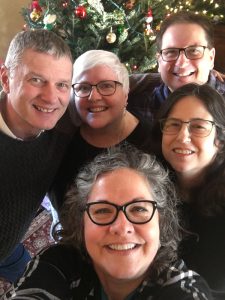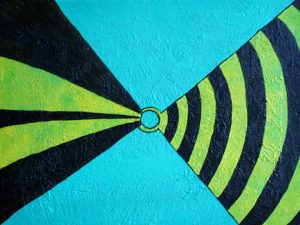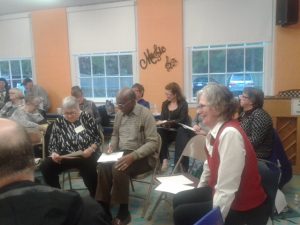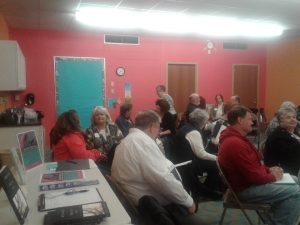 The Difference Listening Makes
The Difference Listening Makes
by Rev. Tom Boomershine, PhD
The sensorium of contemporary biblical scholarship and the sensorium of the Bible and ancient media are inextricably linked. The presuppositions about the media world of the Bible shape the ways in which the “texts” are perceived now and are interpreted in their original context. The sensorium of current biblical scholarship, that is, the sensory matrix of biblical study, is predominantly a sensorium of sight. The biblical texts are examined by looking at them with one’s eyes. It is normal to walk the office corridors of biblical scholars and hear nothing behind those doors. And the classes of biblical scholars rarely echo with the sounds of biblical compositions while reference to and discussion of the texts is omnipresent…
…Exegesis is based on the reconstructed experience of readers of texts. The underlying assumption is that there is essential continuity between the sensorium of the Bible in its original context and the sensorium of 21st century biblical scholarship.
The problem is that recent research into the media culture of antiquity has revealed that this assumption is false. The sensorium of the literature of the ancient world was predominantly a sensory world of sound…
To download a PDF of Tom’s article, click here:
The Difference Listening Makes
 The Dean and 2018 Master Students of ABS
The Dean and 2018 Master Students of ABS
Meet the 2018 graduating class of Master level students in the Academy for Biblical Storytelling and their Dean. They are celebrating the conclusion of the MABS winter retreat in December. Commencement takes place during the Festival Gathering in August of this year. Pictured from left to right: (back row) Ken Quiring, Wendy Johnston, Mike Cantley; (front row) Tracy Radosevic (Dean), Madelyn Campbell.
Telling “A Woman Caught in Adultery”
Enjoy this telling of the story from John 8 about the woman caught in adultery. The teller is Rev. Madelyn Campbell, interim minister for Bull Run Unitarian Universalist in Virginia. In addition to her ministry at Bull Run, Madelyn is a chaplain for the Civil Air Patrol. She will be graduating from the Master level program of the Academy for Biblical Storytelling at the NBS Festival Gathering in August. We will feature more of her work in a future GoTell eletter.
 Not Just for Prisoners Anymore:
Not Just for Prisoners Anymore:
Circle of the Word on the Outside
by Amelia Boomershine
I have said these things to you so that my joy may be in you, and that your joy may be complete. John 15:11
Jesus came and stood among them and said, “Peace be with you.” John 20:19
Occasionally in my Sacred Stories class in the Montgomery County (OH) Jail, which is what we call our Circle of the Word program there, I get asked, “Do you do this on the outside?” Until last month, the answer was a regretful, “No, but I’d like to.” In January we launched a monthly Circle on the “outside” (meaning not in a jail or prison) at Grace United Methodist Church in Dayton. Its purpose is twofold:
- To provide “aftercare” for women who has participated in a Circle of the Word in the jail or a nearby women’s prison, so that they will be able to continue engagement with biblical stories in the same way, supporting their reentry into the community;
- To make available a spiritual formation/Bible study opportunity for members of the congregation.
This year the selection of stories is inspired by a book about how to be joyful in the face of life’s troubles: The Book of Joy by his holiness the Dalai Lama and Archbishop Desmond Tutu, with Douglas Abrams (a Buddhist, a Christian, and a Jew—not a joke). Copies of “joy practices” from the book are distributed as totally voluntary homework.
For an introduction to the theme of joy in the midst of troubles, in January we spent time with the resurrection story of Jesus’ appearance to his disciples behind locked doors (John 10:19-23). In February we will pick a story that relates to the first “pillar of joy”: perspective. I haven’t figured that out yet. Your suggestions are welcome!
There were eight of us for our first circle at Grace, just the right number. And it went even better than I anticipated. It is amazing what meaningful spiritual insights people can have in a peace-filled setting when they spend quality time with a biblical story. The circle process really works to create a safe, non-judgmental, egalitarian, covenant group where deep thinking and deep sharing are encouraged. All of us—those on the inside and those on the outside—can benefit from that.

I enjoy the Pentecost-like sound of participants telling the story to each other and laughing about their storyboards.
A Tale of Two Workshops
by Amelia Boomershine
The last weekend of January, Hope Grandy and I went down to Cincinnati (about an hour south of where we live in Dayton) to lead two workshops. Hope is one of my two circle-keeping teammates leading a biblical storytelling program called “Circle of the Word” at a state prison for women, Dayton Correctional Institution (from this link, scroll down to the program schedule to find COW—proof positive we really do this!).
The day before, I was telling Hope about doing two workshops for United Methodists in the Ohio River Valley District—how I had 14 people sign up for the jail ministry one and 38 for the biblical storytelling one which was 30 people more than I typically get for a biblical storytelling workshop. So she said, “Don’t you need help?” And I said, “Yes! Will you come???” Luckily for me she agreed. Things went way better than they would have otherwise.
The morning workshop was called ‘Til All the Jails Are Empty after a marvelous hymn by the same name (with a different tune it’s called “God Has Work for Us to Do”). People were engaged, telling their connections to the topic, and strategizing ways their churches could get involved. We started off by reading together the words of the hymn. My only regret was not having the music so we could sing it. More next month on…
- the hymn,
- the convictions behind it,
- a study of justice based on it,
- telling the scripture that inspired it.
The afternoon workshop was called Circle of the Word. Originally I planned it would be part two of the jail ministry workshop, but the event coordinator asked if it could target anyone interested in biblical storytelling. That seemed like a good idea to me, especially since I was planning a local church version for anybody, not necessarily people who had been incarcerated (though the initiating motive was “aftercare”—see above article).
When I read there were 38 registered, after calling to make sure that wasn’t a typo, I planned to lead my standard introductory storytelling workshop. BUT, after I consulted the workshop description I had given, I saw that I had promised of model a Circle of the Word. The problem was that COW only works with a small group, 15 at an absolute maximum and that would be way too many for a 75-minute workshop.
The solution came to me: put a small group for the circle in the middle of the room and let others observe the dynamics. Do some basic Circle of the Word activities and, in some cases, those outside the circle can also do them, so they both observe how it works in a circle and experience the storylearning activity as well.
I wanted everyone to have a turn being part of the inner circle. First I thought of passing out numbers, which would mean having to write numbers on a bunch of cards. Next I thought of just using a pack of my colored index cards. That way no one would know where their number was up, so to speak. I thought it might be chaotic, and didn’t know if people being observed by such large audience would be able to open up and share as we do in COW. I wasn’t sure the folks observing would really do the activities too.
After the initial script about how to form the circle, do the greeting ice-breaker, tell the story, and do the check-in I stopped to ask if there were questions. There were LOTS of questions. I answered as best I could, trying to be patient (not my strong suit). Then one woman, somewhat exasperated, asked if that’s all there was to it and how would people learn the story from just hearing it told one time. What a great segue! I said, “No, we just got started; there’s more storylearning activities, so let’s move on and do them!”
After that it was clear sailing. No more resistance in the guise of question-asking. They were all great sports and first-rate participants. Afterwards Hope described how she had watched one person go from a posture of arm-crossed skepticism, to budding interest, to enthusiasm and complete engagement. It was the best event workshop I’ve ever led.
The story we used in the workshop was the story of Jesus’ baptism, testing, and proclamation. I selected it because it’s the Gospel lection for February 18, it breaks down into three concise episodes, and it is familiar to most church folk.
Download a PDF for the workshop handout that was a design for leading Circle of the Word, with basic activities, using Mark 1:9-15 as a model: COW@your-local-church_012718_sample


